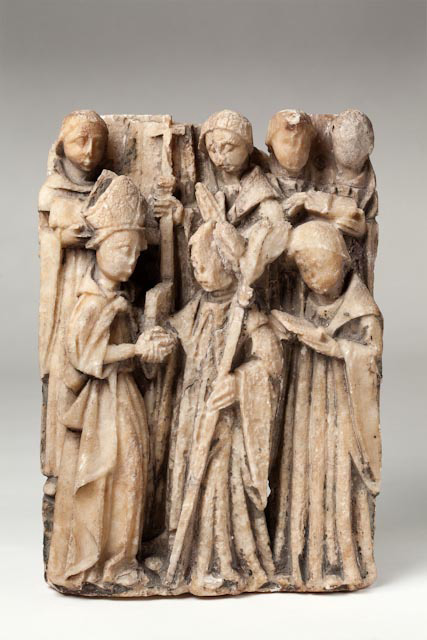alabaster carving
Accession Number NWHCM : 1852.44
Description
Alabaster carving, depicting St. Thomas returning to Canterbury, seven robed figures, one wearing mitre, late 14th to 15th century English
Read Morealabaster carving
English medieval alabaster panels like this one were produced in sets for altarpieces. Originally finely decorated, brightly painted and often gilded, they were made for churches, for the nobility and for owners of private chapels. This alabaster panel represents Saint Thomas returning to Canterbury from exile in France. It probably once formed part of a series of panels depicting the saint's life.
Thomas Becket (1120-1170) was archbishop of Canterbury from 1162 until his murder in 1170. Becket sought to promote the interests of the church over those of the government, which caused a rift between himself and King Henry II. In 1170 Henry's men reportedly heard him sigh: 'Will no one rid me of this turbulent priest,' which his men interpreted as a desire to have Becket killed. Four knights set out to Canterbury to force Becket to submit to the king's will, killing him when he refused. It is unclear whether Henry intended for this to happen. Soon after Becket's death Christians throughout Europe began to venerate him as a martyr. He was made a saint by Pope Alexander III in 1173.


